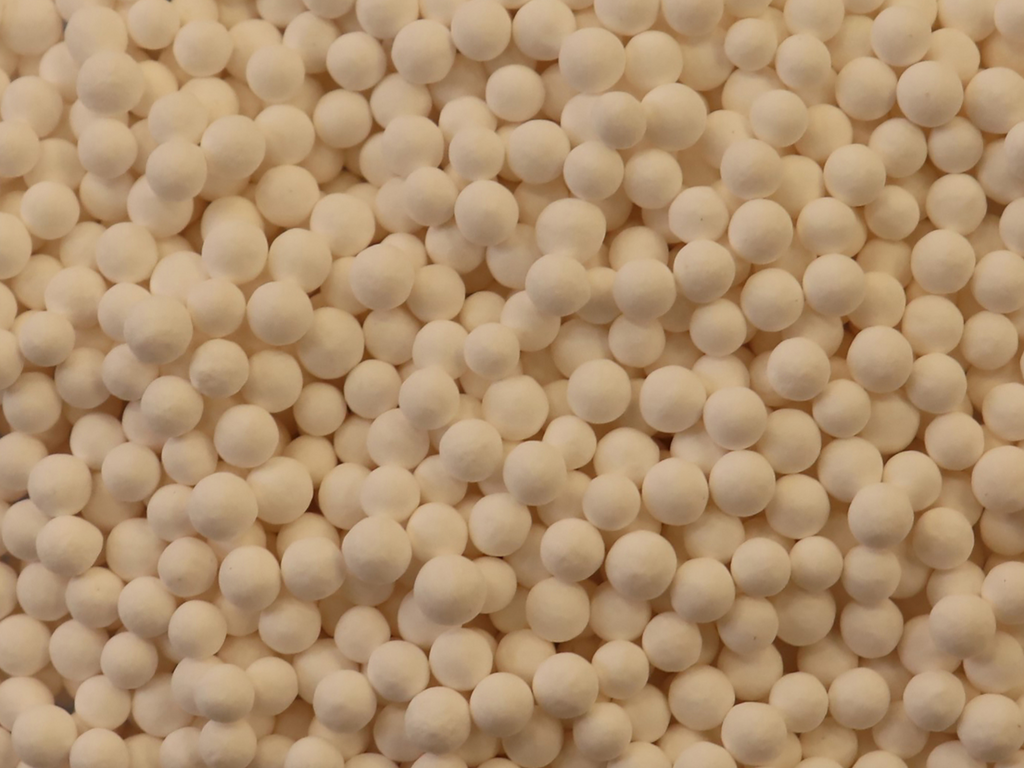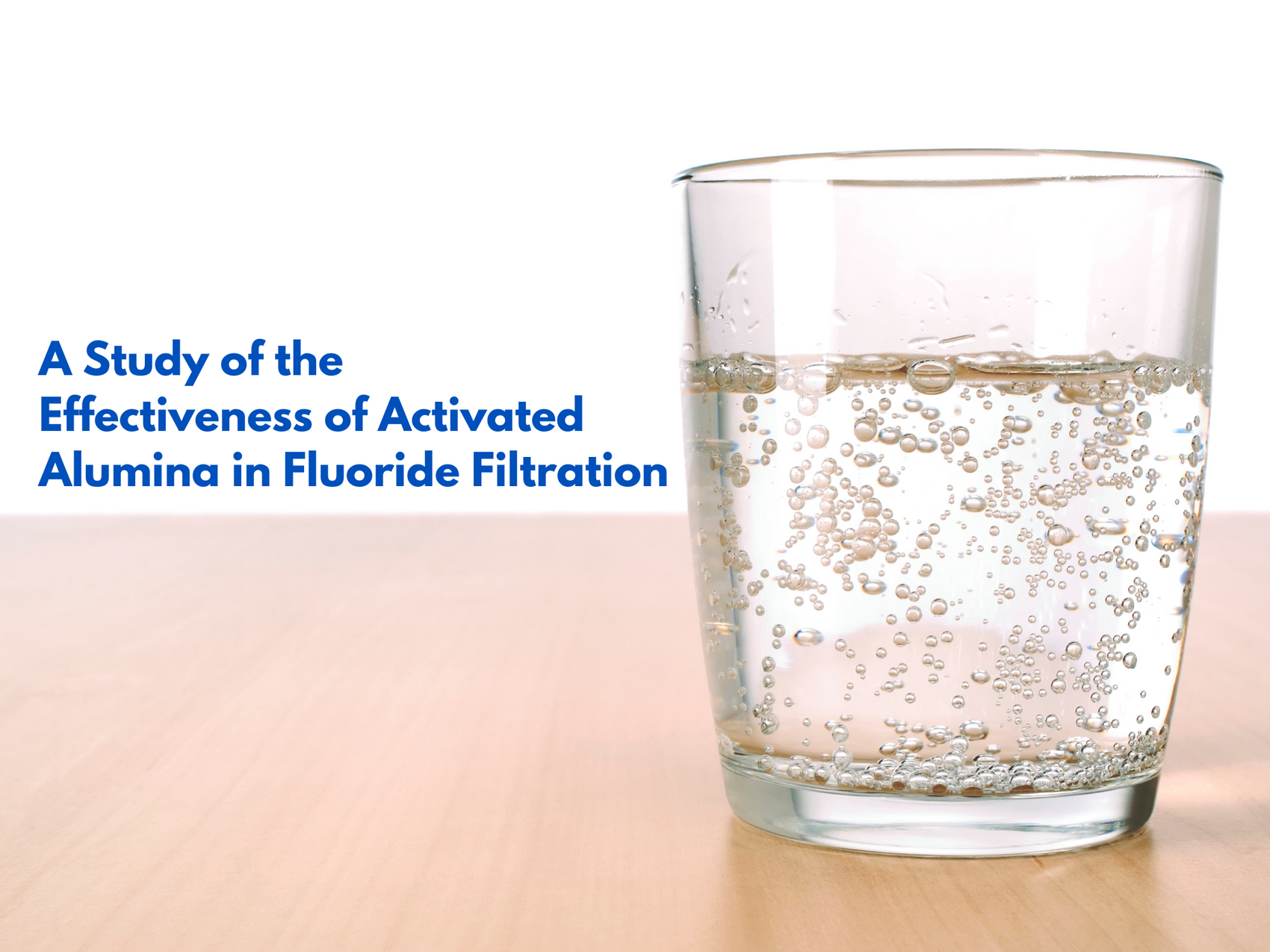Activated alumina (AA) stands as a pinnacle solution in water filtration, targeting fluoride and arsenic removal. Its efficacy has gained recognition from reputable institutions such as the Environmental Protection Agency (EPA). In this comprehensive guide, we delve into the properties, mechanisms, and advantages of activated alumina in purifying water from fluoride. We shed light on its pivotal role in ensuring safe and clean drinking water.

What is Activated Alumina?
Activated alumina, a ceramic compound primarily composed of aluminum oxide (Al2O3), boasts an exceptionally high surface-area-to-weight ratio. This attribute renders it highly effective in adsorbing contaminants like fluoride and arsenic from water sources. The chemical composition of activated alumina typically consists of Al2O3 > 93%, supplemented by minor components such as SiO2 (0.06%), Fe2O3 (0.03%), and Na2O (0.5%).
Properties of Activated Alumina
High Surface Area
The large surface area of activated alumina renders it an ideal medium for fluoride adsorption, enabling thorough water purification.
Compatibility
Activated alumina works synergistically with carbon filters, enhancing the overall filtration process and ensuring the removal of a wide range of impurities.

Fluoride and Its Health Implications
Fluoride, despite its historical promotion for preventing tooth decay, has faced increasing scrutiny in recent years. Contrary to previous beliefs, emerging studies have linked fluoride exposure to dental diseases, bone weakening, and thyroid disorders. The decision to add fluoride to water supplies, made over half a century ago, lacked substantial evidence.
Activated Alumina's Fluoride Removal Capabilities
Activated alumina has become synonymous with fluoride removal, particularly in municipal water treatment systems where fluoride concentrations can reach up to 2 ppm. The process of fluoride removal using activated alumina involves adsorption, reduction, and ultimately clean, fluoride-free water suitable for consumption.
Process of Fluoride Removal
- Adsorption: Fluoride particles are adsorbed onto the surface of activated alumina filters.
- Reduction: Fluoride levels are reduced to below 0.1 ppm, ensuring water safety.
- Output: Clean, fluoride-free water ready for consumption.
Mechanism of Fluoride Removal
Preparation of Activated Alumina
Activated alumina is produced by subjecting aluminum hydroxide to high temperatures, resulting in a porous material with a large surface area. This porous structure facilitates the capture of various impurities, including fluoride ions.

Filtration Through an Activated Alumina Bed
Water passes through a bed or column packed with activated alumina, where fluoride ions are attracted to the filter surface and adsorbed onto it.
pH Considerations
Maintaining a pH range of 5.5 to 6.5 optimizes fluoride adsorption onto activated alumina, ensuring thorough filtration.
Flow Rate Optimization
Controlling the flow rate of water through the activated alumina bed is crucial to allow sufficient contact time for fluoride ions to be adsorbed effectively. A slower flow rate typically yields better fluoride removal outcomes.
Regeneration of Activated Alumina
Periodically, the activated alumina becomes saturated with fluoride ions and requires regeneration. This process involves treatment with an acidic solution followed by a neutralizing rinse, restoring the filter's capacity for further fluoride removal.
Safety and Efficacy of Activated Alumina
Testing and Standards
Activated alumina undergoes rigorous testing to ensure compliance with safety standards, such as the European standard for leaching tests (EN 12902). These tests guarantee the absence of harmful impurities, assuring the safety of the filtration process.
Regeneration Procedures
Initialization and regeneration procedures are implemented to remove impurities before use and renew the filter's capacity, maintaining optimal performance throughout its lifespan.
High-Grade Filtering
In conjunction with activated alumina filtration, incorporating a high-grade filter further enhances water purification by removing residual impurities, ensuring clean and safe drinking water.

The Life Sciences™ Hydrogen Alkaline Bio Energy Water System is a state-of-the-art 5-stage filtration system that ensures clean and safe drinking water by removing impurities and enhancing water quality.
The synergy between alumina and bone char in the fluoride removal filter leverages the benefits of both materials. This optimizes filtration efficiency for clean, safe, and tasty drinking water.
With features like pH enhancement, antioxidant infusion, and a Free Bonus Borosilicate Glass Pitcher with multiple uses for making coffee, tea, herb and also fruit infused alkaline beverages. Backed by a lifetime warranty, it offers a comprehensive and reliable solution for high-quality water purification "Manufacturer to You" Discount Pricing at only $297. The difference between this unit is its activated carbon filter that reduces scale buildup in pipelines. Learn More
Conclusion
Activated alumina is a testament to innovation in water treatment. It offers a reliable and efficient solution for removing fluoride and other contaminants from water sources. Its unparalleled adsorption capacity, coupled with stringent safety measures and compatibility with existing filtration systems, solidifies its position as the preferred choice for municipalities and households alike. With activated alumina, the quest for clean and fluoride-free water reaches new heights, ensuring communities' well-being and health

